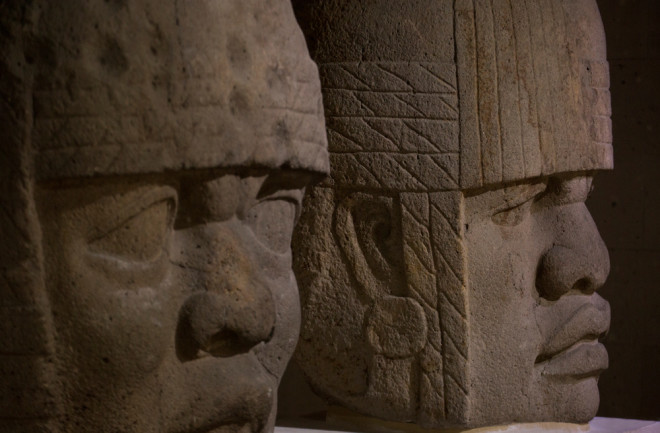In the late 1850s, a farm worker in southern Veracruz, Mexico, was clearing woodland to make way for a cornfield. As he hacked his way through branches and shrubs, he came across a large stone structure that was partially buried.
The worker first assumed the stone was a large cauldron that had been tipped upside down, forgotten and covered in earth. But as he brushed away the dirt and dug around the sides, he realized the stone was intricately carved to resemble a giant head. It was deemed la cabeza colosal de Hueyapan.
In time, archeologists would find 17 more stone heads at four locations. Called the Olmec Colossal Heads, these ancient relics have helped historians learn more about the people who lived there thousands of years ago.
Maybe a Memorial
Researchers mostly agree that the Olmec Colossal Heads were likely depictions of rulers who were memorialized either during or after their lifetime. Colossal head number five, for example, is thought to have been a ruler of San Lorenzo who lived during the second millennium B.C.
The heads range in size, and the tallest is about 9 feet tall and 14 feet in circumference. They weigh about eight tons, but they aren’t uniform. Each of the Olmec Colossal Heads have distinct facial features, and several are wearing head coverings that depict talons or jaguar paws. There is also indication they were once painted in bright colors, and these variations are why scholars think they were portraits of rulers.
Understanding who these rulers were and how they consolidated their power is complex. And researchers are unsure how many other Colossal Heads may still be buried, but they do have more insight to the people who buried them.
More on the Olmec Colossal Heads:
The heads are 3,400 years old.
Each weigh more than a full-grown elephant.
It’s unclear how the Olmec transported the heads.
Uncovering a Mystery
The Olmec people who lived near the Gulf of Mexico in southern Veracruz likely did not call themselves Olmec. In the early 1500s, after the Spanish invaded and occupied Central Mexico, a friar documented the local history and included Aztec stories about the other people they interacted with over time. They referred to the people from southern Veracruz and Tabasco as the Olmeca.
The Olmec people also wouldn’t have referred to the land where the farmer found the first colossal head as Tres Zapotes. But the Olmec did not leave any written material that could have provided insight into their culture. Only archeological research can provide clues as to who these ancient people were, how they lived and when they lived.
Scholars disagree on a specific timeframe as to when the Olmec people lived. Some argue the Olmec culture began fading around 1000 B.C. Others say radiocarbon dates the archeological finds between 1150 and 400 B.C., which puts them in Mesoamerica’s preclassical period.
The Olmec Colossal Heads are mostly dated between 1400 and 1000 B.C., and scholars believe they can tell us more about how these ancient people lived.
Read more:The 6 Most Iconic Ancient Artifacts That Continue to Captivate
Ancient Life
The Olmec people who lived near the San Lorenzo archeological site were sophisticated people who built housing and ceremonial centers out of various materials, including clay. The region flooded frequently, and the Olmec people sometimes raised their houses two-stories high to avoid flood waters.
They also built drain lines that brought water to the sides of the plateaus where they built villages. And because archeologists have found artifacts made from materials not sourced in the immediate area, they believe the Olmec people were part of an extensive trading network that included other cultures living near the Gulf.
The Olmec Colossal Heads are one example of an artifact made with material sourced elsewhere. The heads were made from hard basalt stone brought from Cerro Cintepec in the Tuxtla Mountains, more than 30 miles away.
And because the heads were carved from one large piece, archeologists figure the Olmec people created causeways that allowed them to traverse the plateaus and access riverports.
Still — eight tons was a massive weight to lug 30 miles from a volcano and then haul up a plateau. Today, however, the heads all have been relocated from where they were unearthed. Most are on display in museums, and two are in town plazas.

